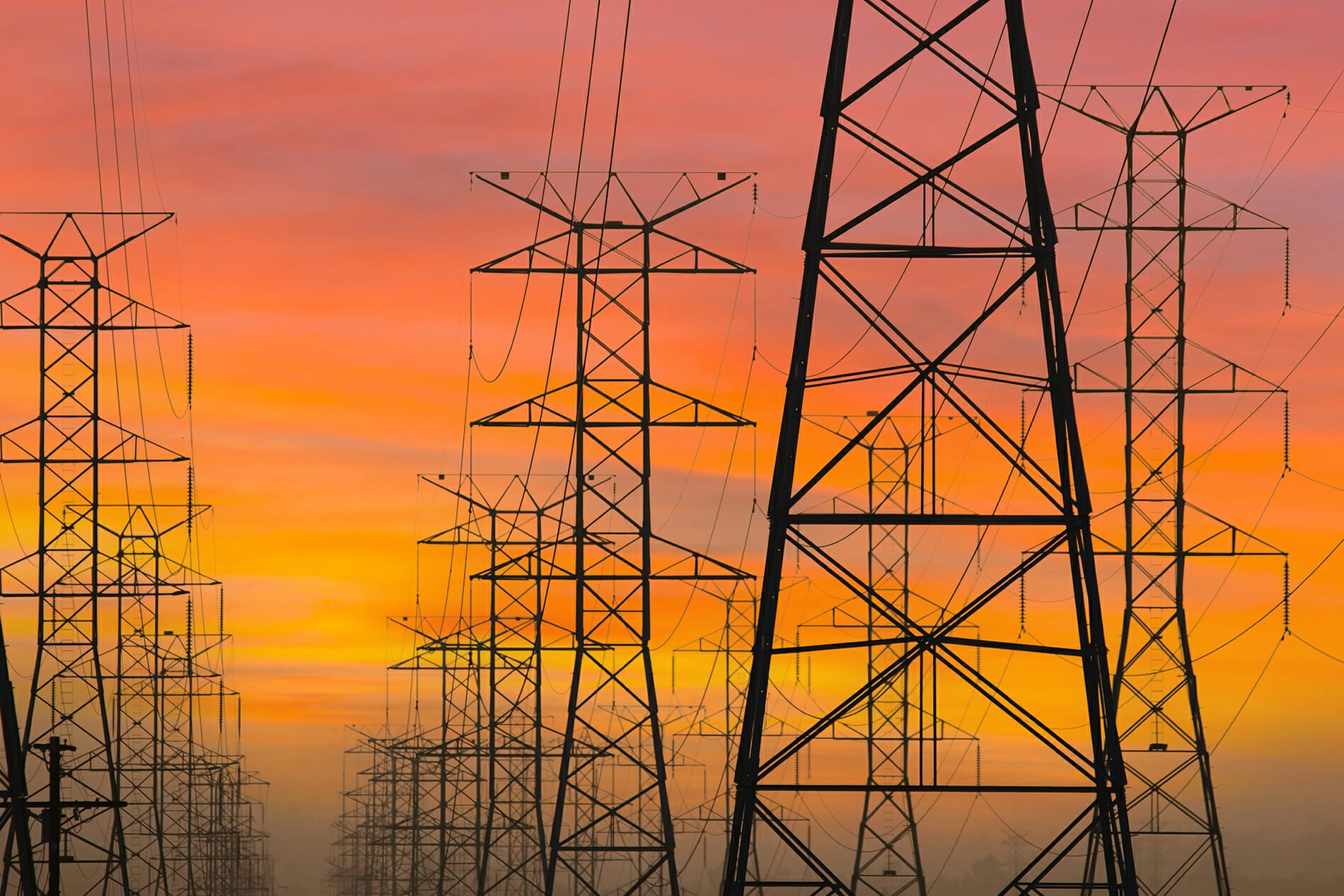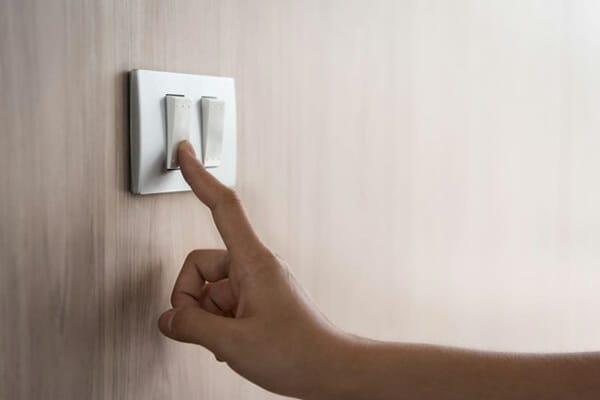From ohms and amperes to volts and watts, electricity has many measurements. One common measurement you’ve likely encountered on your electric bill is kilowatts or kilowatt-hours. But you might still be wondering, what are kilowatts exactly and why do they matter?
When you have a proper understanding of kilowatts and kilowatt-hours, it can actually help you conserve electricity, reduce your carbon footprint, and lower your electricity bill.
With that in mind, let’s go over what a kilowatt is and how it differs from a kilowatt-hour. We’ll also explore kilowatt usage at home and how you can be more energy efficient for a cleaner, greener lifestyle. (And by greener, we mean better for the environment and your wallet!)
How Much Electricity Is a Kilowatt?
Before we can get into how much electricity is in a kilowatt (kW), we need to first understand the basic unit of measurement for electricity: a watt (W).
A watt is a unit of power used to measure the rate of energy transfer over a specific amount of time. One watt is equal to one joule — the standard unit of energy work — per second. To put all that into perspective, it takes about 10 watts to power the typical LED lightbulb in your house.
How does this all tie into the kilowatt? Well, a kilowatt is simply 1,000 watts — much like the metric system where 1 kilogram is the same as 1,000 grams. A kilowatt-hour (kWh) relates to 1,000 watts being used in an hour.
Is 1 Kilowatt a Lot of Electricity?
While 1,000 of anything may sound like a lot, a single kilowatt of energy isn’t a large amount of electricity. With 1 kilowatt-hour, you have the amount of energy needed to watch a television for 10 hours, run a vacuum for an hour, or use a computer for five to 10 hours.
What’s the Difference Between a Kilowatt (kW) and Kilowatt-Hour (kWh)?
The terms kilowatts and kilowatt-hours are often used together. While a kilowatt refers to 1,000 watts (a unit of power), a kilowatt-hour simply means 1,000 watts per hour. Kilowatt-hours (kWh) are a measure of energy used to determine electricity consumption. In other words, it’s how utility companies calculate how much electricity you use.
To determine your kilowatt-hours of energy, you multiply the watts by the number of hours you use the item, then divide that by 1,000 to get kWh. For example, if you run a 10-watt LED lightbulb for an hour, you’ve used 10 watt-hours (Wh) or 0.010 kWh of energy.
When you receive your electricity bill, your total balance is generally calculated from the total kWh of energy usage you had that month.
How Many Kilowatts Run a House?
In your home, you have numerous electrical appliances, light bulbs, and more. They all draw power, so it’s easy to rack up the kilowatts. The typical house has an annual energy consumption of about 10,632 kWh, which amounts to 886 kWh monthly.
Of course, this can vary greatly from home to home and wattage demand. For example, a larger home may require more lighting and additional heating and air conditioning, increasing its consumption. Or perhaps you work from home, leading to more monthly energy consumption. Or maybe you focus on energy saving practices at home so you stick to only the necessities to minimize your power consumption.
Whatever the case may be, the number of kilowatts you use and the cost of your energy bills will vary based on your lifestyle and energy plan.
How Do Kilowatts Translate to Energy Costs?
It’s relatively straightforward. It all starts with the number of watts your home uses—everything from those 10-watt LED bulbs to higher-watt appliances.
For simplicity’s sake, let’s say you have the following electronic items in your homes:
- 20 10-watt (200 watts total) LED bulbs that run an average of eight hours a day
- A 100-watt television that runs about three hours a day
- A computer that uses 60 watts and runs eight hours a day
With the sample usage mentioned above, those electrical devices would use the following kWh of energy:
- The 20 LED lights would use 1,600 Wh (200 W x 8 hours = 1,600 Wh) or 1.6-kWh (1,600 Wh / 1,000 = 1.6 kWh) per day
- The television would use 300 Wh or 0.30 kWh per day
- The computer would use 480 Wh or 0.480 kWh per day
This would bring us to a total of 2.38 kWh daily. If you’re in a 30-day month, this means your electricity consumption for that month would be 71.4 kWh.
Now it’s simply multiplying your kWh usage by your per-kWh electricity rate. Nationwide, the average price for 1 kWh of energy is 17 cents. Multiply that rate by your 71.4 kWh of electricity usage that month and you’ll get $12.14.
Keep in mind, this is an extremely low number because we only accounted for a few appliances. In reality, the number of kilowatt-hours you consume will likely be far higher, as you probably also run things like a microwave, air conditioner, heater, and other gadgets.
In some cases, your energy supplier may have varying price structures. For instance, it might charge you a higher rate when electricity demand is at its highest. In this case, you must determine how many hours you used each electric device in and outside peak hours.
Enter your ZIP Code and compare electricity rates
Are There Other Electricity Measurements to Know?
Watts, kilowatts, and kilowatt-hours are only the tip of the iceberg in measuring electricity and energy. The next step up is the megawatt (mW) and megawatt-hour (mWh), which are 1,000 kW and 1,000 kWh, respectively.
A gigawatt (gW) or gigawatt-hour (gWh) is even larger, as it’s the equivalent of 1,000,000 kW or 1,000,000 kWh, respectively.
It may be hard to wrap your head around just how much energy a gigawatt really is. Imagine an area filled with just over 3 million solar panels or 333 wind turbines — those setups would produce about 1 gW of electricity.
How Can I Reduce My Energy Use?
Whether you’re looking to lower your electricity bill or want to use less power to reduce your carbon footprint, you have a range of options to help reduce the amount of electrical power you use. Let’s review some of these options.
Upgrade Power-Hungry Appliances
As technology advances, household appliances become more efficient, allowing them to perform the same work with less power consumption. Review the watt requirements for your appliances and compare these to the electrical energy newer appliances need.
There are plenty of Energy Star upgrades you could make to improve the efficiency of your home — and there might even be some federal tax credits for doing so. Granted, upgrading has upfront costs but replacing old appliances could be a great way to save over the long run.
Maintain Your Heater and Air Conditioner
Heating and cooling your home can account for 50-70% of your total energy costs, and a poorly maintained system can result in increased power consumption. This is why it’s critical to follow all the manufacturer’s recommended air conditioner maintenance, such as changing filters, cleaning the coils, and more.
Turn Off the Lights
It’s very easy to walk into a room, flip on the lights, and leave without turning them off. Over time, this can add up to extra electricity costs.
Make a conscious effort to always turn that light off as you leave the room. If you habitually forget, buy motion-sensor light switches. They automatically turn off the lights when no movement is detected in a room.
Adjust Your Thermostat
It may seem like a small change, but periodic thermostat adjustments can significantly affect your power bill. According to the Department of Energy, you can save up to 10% on your annual power bills by turning your thermostat up or down 7-10 degrees for eight hours a day in the summer and winter.
When you head out to work in the morning, turn the thermostat up 7-10 degrees in the summer or down the same amount in the winter. You can also make finer adjustments when you go to sleep. If you have difficulty remembering this, you can also invest in a programmable thermostat that does this for you.
Unplug the Vampires
Did you know many electrical devices continue drawing power even when turned off? These are known as energy vampires, and they can put a serious dent in your wallet. The National Renewable Energy Laboratory (NREL) asserts these “vampire loads” cost the average household about $200 per year in unnecessary energy expenses.
If you have a device that uses a box-style or brick-style plug, chances are this is constantly drawing power despite the device being turned off. Other common offenders include cable TV boxes, DVD players, video game consoles, and cell phone chargers.
You can plug these devices into power strips to make disconnecting them from the power grid quick and easy with just one flip of a switch.
Lean Into Green Tech
Lower your power consumption by leaning into all the green technology available today. This can be as significant as installing a whole-home solar power system that offsets most or all of your power consumption. However, it can also be something simpler, such as installing LED lights in place of incandescent lights or adding solar-powered attic ventilation fans, geothermal heating, or a solar water heater.
Some of these upgrades can be pricey, but local and federal incentives often exist to help absorb some of the cost. For example, through 2032, the federal government will give you a tax credit worth up to 30% of the installed value of a solar panel system. This incentive falls to 26% in 2033 and 22% in 2034, then expires in 2035.
Understanding Kilowatts Is Important in Reducing Consumption
While you may not need to know the inner workings of complex electrical systems, familiarizing yourself with some basic measurements of electricity — like kilowatts and kilowatt-hours — can help you reduce your own energy consumption.
First, when you better understand kWh billing on your electric bill, you know if you’re using too much unnecessarily. Second, understanding kilowatts allows you to review your appliances and compare them to others to see if new ones will help you use less energy.
If you’re looking to lower your energy bill or want to switch to a greener electricity provider, Energy Savings can help. We leverage Texas’ deregulated electricity market to find you the lowest possible per-kWh billing rate, suppliers that use renewable energy (like wind power or solar energy) or a combination of both. Check out some available electricity plans today.
Brought to you by energysavings.com
All images licensed from Adobe Stock.




